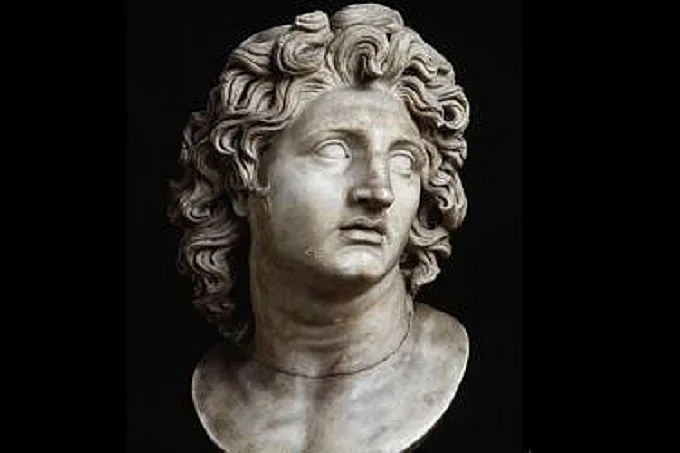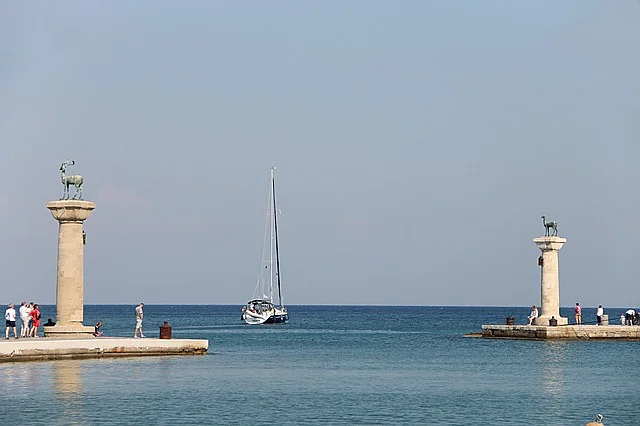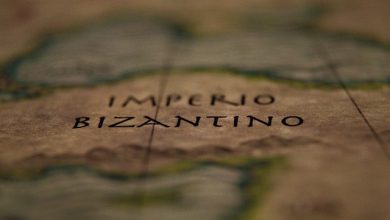Why was Colossus of Rhodes erected, how long did it stand, and why did its builder commit suicide?

The sculptor Chares could well have remained an unknown student of the great Lysippos if he had not become the creator of one of the Seven Wonders of the World. And it was this creation of his that played a fatal role in the life of Chares of Lindos, turning the work on the Colossus into great professional success and personal tragedy at the same time. The sculptor made a mistake that ultimately cost him his life but inscribed his name in the annals of art for millennia to come.
The Colossus of Rhodes stood for only half a century, but during this time managed to get into that famous antique list that ensured immortality – albeit not in the literal, physical sense of the word. What became the wonder of the world in the eyes of the ancient Greeks? Everything that boggled the imagination, what could be boasted to foreigners, and even to those compatriots who did not have the opportunity to see such masterpieces of human genius with their own eyes.
The reason for the creation of the Colossus of Rhodes arose in connection with the redistribution of spheres of influence in different parts of the former empire of Alexander the Great. The island of Rhodes in the eastern part of the Mediterranean Sea was of interest as a strategically important object of several rulers at once. In 305 BC. Demetrius Poliorcetes brought an entire army to the island to take the capital, the city of Rhodes. The siege began, for a year, the Rhodians held the defense, despite the use of powerful siege weapons by the attackers. As a result, Demetrius was forced to make peace, which the inhabitants of the island considered their victory.
Then the idea arose to create a giant statue in the main harbor of Rhodes – in honor of the valor of the inhabitants of the island and in gratitude to its patron god. It was Helios, the god of the Sun, as it was believed in antiquity, who created Rhodes: since there was no place dedicated to this deity in all of Hellas, Helios brought a new island out of the depths of the sea with his own hands. To fulfill the order, the inhabitants chose the sculptor Chares, a native of Rhodes and a student of the famous Lysippos. And to pay for the creation of the Colossus, they sold and melted down the siege weapons abandoned by Demetrius.
How one of the Seven Wonders of the World was created
Chares of Lindos, apparently, approached the work with great enthusiasm – otherwise, the Colossus would not have turned out so impressive and striking the imagination of contemporaries. The master already had experience with large statues, and from the Rhodians, the sculptor received at least three hundred talents of silver – it was quite possible to create an amazing figure of the god Helios ten times taller than an ordinary person. From afar, ships sailing to the harbor of Rhodes would see a huge statue sparkling in the sun, a symbol of the island’s majesty and power.

For twelve years, the Rhodians raised money for the construction of the statue, and for twelve, the work on the erection of the Colossus went on. Where it was installed and how exactly the process was organized is unknown. There is a version that Chares of Lindos worked right at the site of the statue’s installation, as its height increased, he poured a hill around, which played the role of a kind of scaffolding.
There is no information about how exactly the figure was located – probably, for greater stability, a spear or drapery of clothing was used. The main thing is that the original dimensions of the Colossus were revised, and the inhabitants of Rhodes ordered the sculptor a figure twice as high, adding the same amount to the amount already paid, that is, they doubled the fee.
For some reason, Chares, obviously well-versed in anatomy, made this stupid mistake – he lost sight of the fact that a statue enlarged two times would not require twice the amount of material, and therefore would not be twice as expensive, but more. In physics, this is called the “square-cube law”. By agreeing to the deal, Chares of Lindos doomed himself to ruin.
During the years that the work on the statue was going on, he lost everything, became a debtor to relatives and friends, and after the Colossus was installed, he committed suicide. However, there is a version that the cause of the sculptor’s suicide was a crack on the leg of the statue that he noticed when installing.
The short life of the statue and the long posthumous existence
The frame was made of stone and iron, the statue itself was made of clay, and covered with bronze plates (mostly melted down from those very siege weapons). The base — either round or octagonal — was no less than eighteen meters in diameter. In height, the Colossus reached 33-36 meters. It was the figure of a naked young man – the god Helios, judging by the antique images – with a crown on his head and a raised hand (the latter is sometimes disputed, since in such a position of the statue, taking into account its size and weight, there were great risks of cracks and destruction of the figure).
No information has survived about where the statue was constructed; in modern times, it was usually depicted standing with each foot on both sides of the harbor. Apparently, this could not be, given the size of the Colossus and the width of the harbor – after all, then the statue had to spread its legs too wide.

In addition, the erection of the statue for a long 12 years would paralyze the work of the port, not to mention the consequences of the collapse. The bronze figure of Helios, unprecedented in size, sparkling in the sun, probably made a strong impression on his contemporaries. The Colossus confidently took place in the list of the best creations of the human genius, compiled by ancient poets.
The statue stood for 54 years and was knocked down by an earthquake in 226, “broken at the knees,” as Strabo wrote about this, who saw the ruins. The ruler of Egypt did not manage to raise the statue, and the order of a new one, as they say, was prevented by the Delphic oracle, who threatened Rhodes with the wrath of the god Helios, if they dared to do so. The wreckage remained in place for over eight centuries. But even then, the Colossus was an impressive sight. Only a tall person could grasp the statue’s thumb with both hands.
In 653, Rhodes was captured by the Arabs, and the fragments of the statue were melted down and taken away. Legend has it that the bronze ingots were transported on 900 camels. And in the 19th century, the idea of creating a colossus on the coast of the island was embodied in the New York Statue of Liberty.
The height of the American version is slightly higher than the height of the Rhodes statue, amounting to 46 meters, and the entire structure, including the granite pedestal and the concrete base, reaches 93 meters. As for the reproduction of the ancient wonder of the world, the figure of Helios, the discussion has been going on since the beginning of the millennium but yielded nothing.




